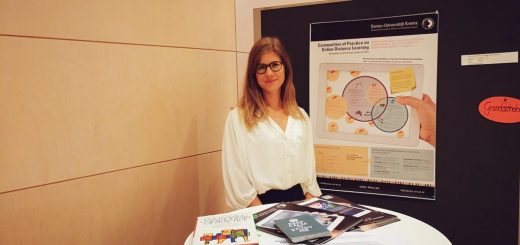When Communities Fall Silent: Why Good Intentions Aren’t Enough
We’ve all seen them: promising communities built around shared goals—often in the context of EU projects—that slowly lose momentum, becoming quiet, stagnant, or invisible. Despite the best intentions, some communities in academia never reach their full potential.
That’s exactly where my workshop at EU.ACE Week 2025 in Krems started. Titled “Learning Together, Teaching Better”, it invited participants—higher education lecturers, researchers, and students—to reflect on the real value of communities and what it takes to make them thrive, especially in international academic settings.
While the focus was on communities for educators, administrators, and researchers in higher education, our discussion naturally extended to other types of communities too—those we engage with personally and professionally, both inside and beyond academia.
What Makes a Community Work?
We looked at different types of communities—inside and outside academia—and asked:
Why do some feel alive and energizing, while others never get off the ground?
To answer that, we turned to research. Drawing on Henri & Pudelko’s community typology and insights from Wenger’s work on Communities of Practice, we explored the different forms communities can take:
- Communities of Interest
- Goal-Oriented Communities
- Learner Communities
- Communities of Practice

The different community types show different levels of cohesion and intentionality. How intentional is the community you are participating in? How well do you know the members? These questions can help to categorize the community type.
We reflected on why people join, how participation varies (from lurkers to core members), and what educators gain: professional learning, identity, co-creation, and a sense of belonging.

Real Talk: The Challenges
Using Mentimeter, we gathered participants’ experiences with joining or building communities. The results were honest and eye-opening:
“Not sure I fit in.” “Too many lurkers.” “Only a few take responsibility—it becomes exhausting.”
I clustered the responses in Mentimeter afterwards and found recurring themes:
Difficult entry points, lack of time, unclear norms, or core groups that feel too closed. All of this matched what the literature says:
technology, time pressure, hidden hierarchies, unwritten rules and the absence of trust can easily derail even the best community ideas.
Lurking – Bad or Good for the Community?
One topic that sparked reflection was “lurking.” Is it a problem—or part of the process? While it can be frustrating for core members when only a few actively contribute, lurking isn’t necessarily negative. Research (e.g. Wenger et al., 2002) shows that peripheral participation can be an important phase: people observe, learn, and slowly grow into more active roles. Communities need to be open to this gradual engagement—and recognize that even silent members may be learning, reflecting, or simply waiting for the right moment to contribute. This can be connected to a model of learning and teaching called “cognitive apprenticeship”.
So, What Can We Do?
One takeaway from our session was this: vibrant communities don’t just “happen.” They require careful design, responsiveness to members’ needs, and space for evolution. We discussed strategies like creating rhythms, welcoming peripheral participation, and showing the value of staying engaged—not just for the project, but for personal and professional growth. Practicing “learning out loud” or “working out loud” can help to gain the skills and understanding for exchanging and sharing in (online) communities.
Presentation Slides “Learning Together, Teaching Better”
💬 If you’re trying to keep your community from falling silent, start by listening—to members, to your context, and to what people might not say out loud. That’s where growth begins. What are your experiences with communities? What were “community fails” that you encountered, which good practice examples do you know? Please share in the comments!

